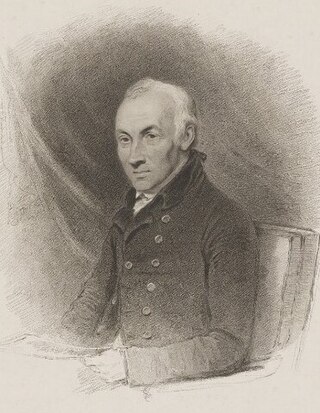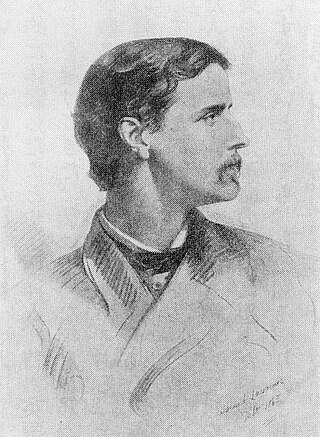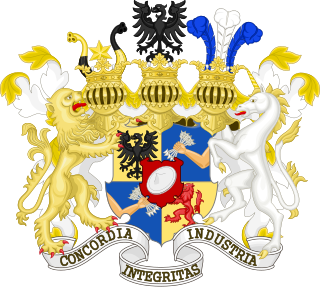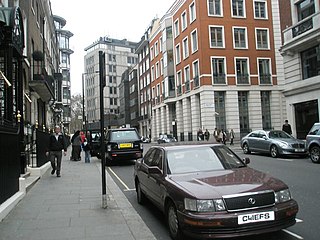
William Mitford was an English historian, landowner, and politician. His best known work is The History of Greece, published in ten volumes between 1784 and 1810.

In the 19th century members of the English Rothschild family bought and built many country houses in the home counties, furnishing them with the art the family collected. The area of the Vale of Aylesbury, where many of the houses were situated, became known as "Rothchildshire". In the 20th century many of these properties were sold off with their art collections dispersed. Today only Eythrope House still belongs to the family; however, they still retain influence in how Ascott House and Waddesdon Manor are managed. In the loss of country houses in the 20th century only Aston Clinton was lost.

Halton House is a country house in the Chiltern Hills above the village of Halton in Buckinghamshire, England. It was built for Alfred Freiherr de Rothschild between 1880 and 1883. It is used as the main officers' mess for RAF Halton and is listed Grade II* on the National Heritage List for England.

Algernon Bertram Freeman-Mitford, 1st Baron Redesdale, was a British diplomat, collector and writer, whose most notable work is Tales of Old Japan (1871). Nicknamed "Bertie", he was the paternal grandfather of the Mitford sisters.

Exbury is a village in Hampshire, England. It is in the civil parish of Exbury and Lepe. It lies just in the New Forest, near the Beaulieu River and about a mile from the Solent coast. It is best known as the location of Exbury House, built by the Rothschild family, and the famous Exbury Gardens. The Rothschild family still have significant land ownings in the area.

Exbury Gardens is a 200-acre (81 ha) informal woodland garden in Hampshire, England with large collections of rhododendrons, azaleas and camellias, and is often considered the finest garden of its type in the United Kingdom. Exbury holds the national collection of Nyssa (Tupelo) and Oxydendrum under the National Plant Collection scheme run by the Plant Heritage charity. The gardens are rated Grade II* on the National Register of Historic Parks and Gardens.

Major Lionel Nathan de Rothschild, OBE was a British banker and Conservative politician best remembered as the creator of Exbury Gardens by the New Forest in Hampshire. He was the eldest son of Leopold de Rothschild (1845–1917) and a part of the prominent Rothschild banking family of England. In 1910, he was elected to the House of Commons. In 1917, he co-founded the anti-Zionist League of British Jews.

Gunnersbury Park is a park between Acton, Brentford, Chiswick and Ealing, West London, England. Purchased for the nation from the Rothschild family, it was opened to the public by Neville Chamberlain, then Minister of Health, on 21 May 1926. The park is currently jointly managed by Hounslow and Ealing borough councils. A major restoration project funded by the Heritage Lottery Fund was completed in 2018. The park and garden is Grade II listed.

Tring Park Mansion or Mansion House, Tring Park, is a large country house in Tring, Hertfordshire. The house, as "Tring Park", was used, and from 1872 owned, by members of the Rothschild family from 1838 to 1945.

The Rothschild banking family of England is the British branch of the Rothschild family. It was founded in 1798 by Nathan Mayer Rothschild (1777–1836), who first settled in Manchester before moving to London, Kingdom of Great Britain. He was sent there from his home in Frankfurt by his father, Mayer Amschel Rothschild (1744–1812). Wanting his sons to succeed on their own and to expand the family business across Europe, Mayer Amschel Rothschild had his eldest son remain in Frankfurt, while his four other sons were sent to different European cities to establish a financial institution to invest in business and provide banking services. Nathan Mayer Rothschild, the third son, first established a textile jobbing business in Manchester and from there went on to establish N M Rothschild & Sons bank in London.

Anthony Gustav de Rothschild was a British banker and member of the Rothschild family.
Major Edmund Leopold de Rothschild was an English financier, a member of the prominent Rothschild banking family of England, and a recipient of the Victoria Medal of Honour (VMH), given by the Royal Horticultural Society.

Curzon Street is a street in Mayfair, London, within the W1J postcode district, that ranges from Fitzmaurice Place, past Shepherd Market, to Park Lane. It is named after Sir Nathaniel Curzon, 2nd Baronet, who inherited the landholding during 1715. More houses were built there during the 1720s.

Sir Alfred Lane Beit, 2nd Baronet, was a British Conservative Party politician, art collector and philanthropist and honorary Irish citizen.

Baron Guy Édouard Alphonse Paul de Rothschild was a French banker and member of the Rothschild banking family of France. Between 1967 and 1979, he was the chairman of the French Banque Rothschild, nationalized by the French government in 1982, and maintained investments in other French and foreign companies, including Imerys. He was named to the International Best Dressed List Hall of Fame in 1985.

Requiem For A Wren is a novel by Nevil Shute. It was first published in 1955 by William Heinemann Ltd. It was published in the United States under the title The Breaking Wave.

Asthall Manor is a gabled Jacobean Cotswold manor house in Asthall, Oxfordshire. It was built in about 1620 and altered and enlarged in about 1916. The house is Grade II listed on the National Heritage List for England.

Ashton Wold is a 54.0-hectare (133-acre) biological Site of Special Scientific Interest (SSSI) east of the market town Oundle in Northamptonshire.
The Rothschild family is a European family of German Jewish origin that established European banking and finance houses from the late eighteenth century.
Ambrose Christian Congreve was an Irish industrialist, best known for his world-famous garden at Mount Congreve.


















